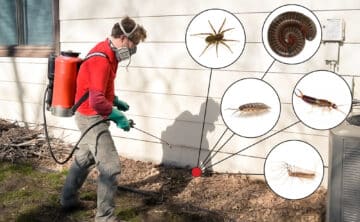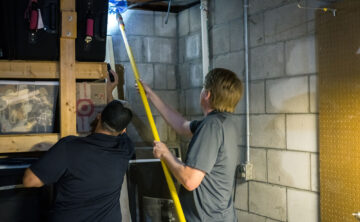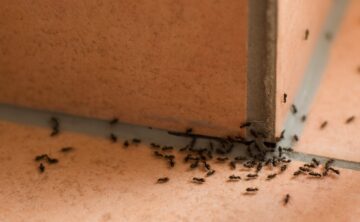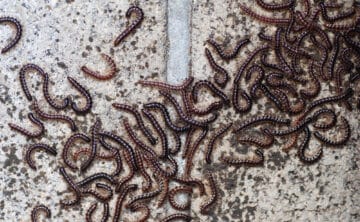Spring Pest Control Tips for Your Minneapolis Home
It seems to happen every spring across the Minneapolis and St. Paul area. You may see one lone ant, and then seemingly overnight, there’s an army of them marching across your kitchen floor. First, the good news: Spring pests such as ants, sow bugs, centipedes, spiders, silverfish, and earwigs are harmless to humans. The bad news is seeing these pests may signal more significant problems, such as moisture issues or cracks in your home’s foundation or window and door openings.
Below, our pest experts have compiled a list of the best do-it-yourself spring cleaning tips, so you can keep pests out of your home!

Bug-proofing your home starts in your yard
Once the snow has melted in Minnesota, a yard clean-up is a powerful first step in preventing pests such as centipedes, spiders, silverfish, earwigs, and sowbugs from entering your home. However, as soil thaws and becomes saturated with spring rain, pests looking for a more comfortable habitat often enter basements through foundation cracks and other openings. Our experts have assembled this checklist to help you eliminate the conditions that attract pests to your home.
Spring pest control: yard clean-up checklist
✓ Eliminate hiding places and food sources
- Move organic material like wood mulch and firewood away from your home’s foundation.
- Trim landscape plants so they are not too close to the foundation. Trim branches that are closer than 2 feet.
- Remove leaf litter and other debris from window wells.
- Sweep cobwebs from your home’s exterior.
✓ Address moisture issues
- Be sure gutters and downspouts are installed correctly, so they carry water away from the foundation.
- Survey the soil grading around your home’s perimeter to be sure it slopes away from the foundation, with at least six inches of slope for every ten feet. (Tip: Place a humidifier in your home below ground level if it is damp).
- Don’t allow water to collect in empty containers such as buckets or trays.
✓ Inspect your home’s foundation for new cracks
- Seasonal freezing and thawing can open new cracks and crevices, especially near doors and windows.
- Seal any openings you find using appropriate weather-proof materials.
- Inspect outdoor faucets and irrigation systems and any repair leaks you discover.
Spring pest control: inside your home checklist
✓ Watch for signs of pests entering and take action when you first spot them
- Many pests, such as ants and mice, will follow scent markers left by others.
✓ Make your home unwelcoming to pests
- Keep it dry and eliminate easy meals such as crumbs, drips, and open or leaking packages.
✓ Secure the perimeter
- Trim trees and landscape plants to avoid giving pests an easy entrance bridge into your home.
- Avoid stacking firewood next to your home.
✓ Try natural deterrents
- There is evidence that ants will shy away from certain strong scents such as mint, or chili pepper. You can sprinkling spices like this where you have seen ant traffic.
How can I keep spring pests out of my Minnesota home?
Taking proactive steps to prevent pests from entering your home is the best way to keep pests out since you won’t require treatments later on to get rid of them. If spring insects have already found their way inside, we offer one-time control services for spiders, ants, centipedes, millipedes, and other pests. Targeting a service at the beginning of the spring can usually take care of pest prevention for the whole season. This means no unwelcome guests in your home, and also fewer treatments will be needed.
How can I prevent stinging pests such as wasps and hornets?
As temperatures continue to rise, late spring pests will begin to appear. If you notice these yellow and black stingers hovering near your home, either in the ground or around the eaves, watch carefully to see if you can tell where they may be entering or building a nest. Treat these areas as soon as you notice activity to avoid having hives or underground burrows established near your home where they can be easily disturbed, resulting in stings.
Contact our pest control experts!
Our licensed pest prevention experts understand effective pest control requires a comprehensive approach. Until problems such as foundation cracks are fixed, pests will simply return even after treatments eliminate the current population. We offer several pest protection plans to meet your needs. Spring is also a great time for a professional Foundation Seal-Up to keep pests out!.
Other items you may be interested in:

Spider Control
Our spider control service, available one time or as part of a pest protection plan, ensures your home is spider-free!

Ant Control
Our experts can protect your home against ants with a one-time service or as part of a Pest Protection Plan.

Centipede & Millipede Control
We offer an exceptional pest control solution that fights against centipedes, millipedes, sow bugs, and more!




